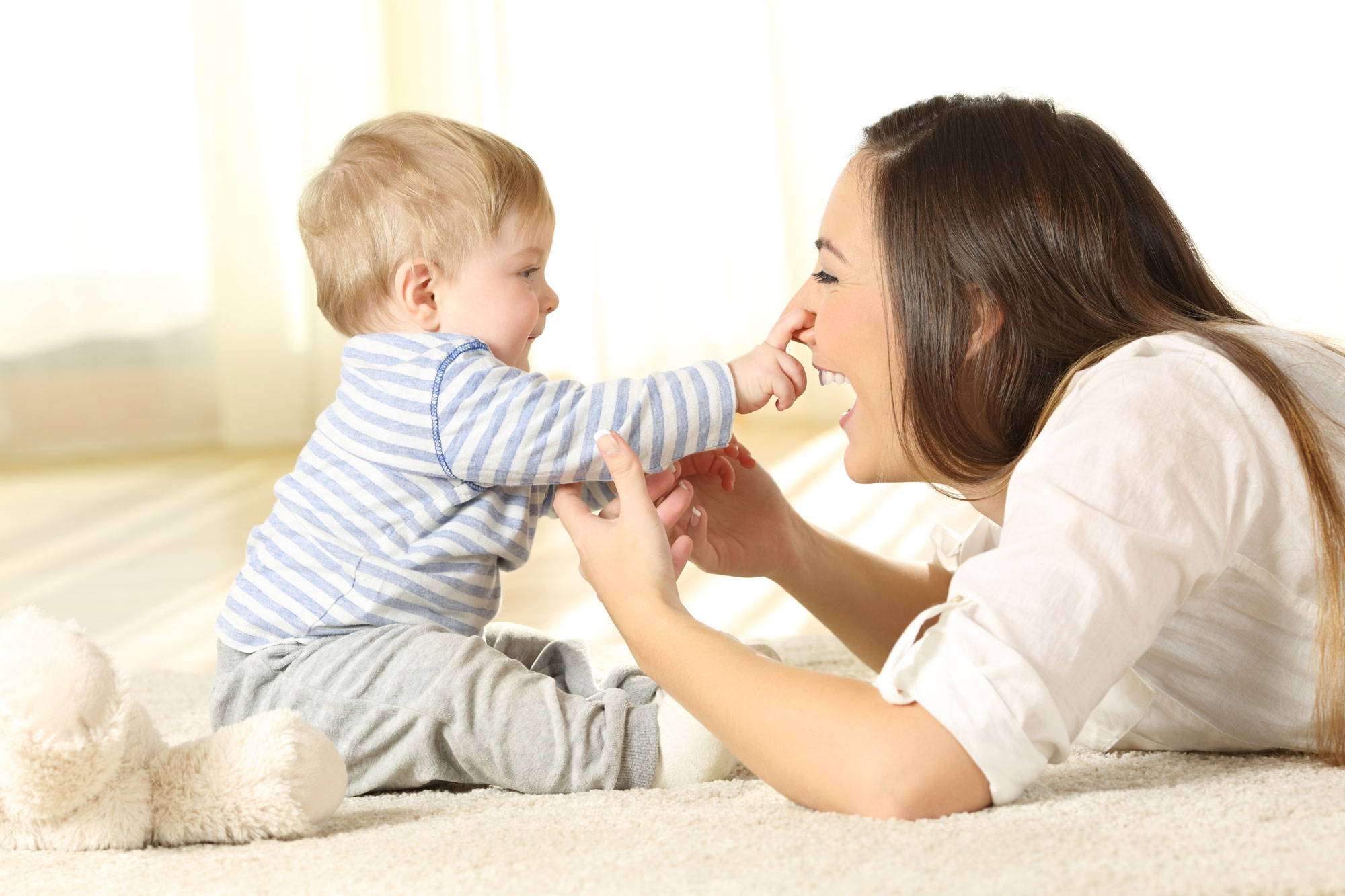Get Face to Face to Communicate!

The picture to the right tells us a lot about how young children learn to communicate. There are many things that babies learn about their world by looking at people, such as:
- noticing when someone wants to interact with them
- understanding peoples’ emotions
- copying peoples’ sounds and facial expressions
One really important thing that happens when babies look at us is that they notice what we are looking at [1]. When babies look where others are looking and hear words spoken during these moments, it helps them match words to things in their everyday life.
How often do young children look at us?
Given that so much information about communicating and interacting is learned by looking at people, you would think that young children spend a lot of their time looking at us – but they don’t! Compared to how often they look at toys, research tells us that typically developing young children spend only a small amount of their time looking at people’s faces [2]:
- When sitting across from their parents, babies spend 10-15% of their time looking at their parents’ faces and 60-70% of their time looking at toys.
- When babies are free to move around a room, they look at their parents’ faces less than 5% of the time, whereas they look at toys 37% of the time.
What does this mean for children whose communication development is delayed?
We know that young children don’t spend a lot of time looking at us; yet we also know how much information they receive when they do look at us. For young children with delayed communication development, this reality can pose a challenge – that is, how to help them gain as much information about communication as possible in the limited time they spend looking at us. Below are some tips that can help make this easier for your child, and it all starts with being face-to-face.
Be face-to-face when you communicate
Being face-to-face means getting down to your child’s level and making sure your face is directly in front of their face. Research has shown that young children look at faces most when their caregivers are sitting or crouched down in front of them [2]. If we stand up, we tower over children and they can’t see all of the important information our face is providing. By getting down to their level, it’s easier for a child to notice you.
Here are some other things you can do when you’re face-to-face:
- Notice what your child is interested in and talk about it – children are more likely to notice you and interact with you when you talk about their interests.
- Join in your child’s play – if you join in with whatever your child is playing with, your child will notice you and what you’re doing. Letting your child lead the play will keep the interaction fun and motivating.
- Some silence speaks volumes – an easy way to encourage your child to notice you is to stop what you are doing/saying and wait. This pause in the interaction gives your child a moment to think about what to do next, the message they want to send, and how to send you that message. If you are face-to-face while you wait, it’s likely your child will notice you.
- Toys steal the show – it’s hard to compete with toys! Studies show that young children spend more time looking at toys than at us [2]. While toy play is very important for children’s development, you can also play games that don’t involve any toys. These “People Games” just involve people, which makes it easier to notice and look at each other while playing. Examples of early people games include Peek-a-boo, finger games like “Where is Thumbkin?”, Ring-Around-the-Rosie, or “Chase.”
By positioning yourself face-to-face with your child, you’ll make it easier for them to notice all of the information that your face conveys. When you also join in with your child’s interests, you’ll show your child that you are engaged and interested in what they are doing and encourage them to interact with you. And the best part about being face-to-face is that you’ll easily see all of the smiles and giggles that happen as you enjoy special moments together.
Similar articles by tag:
